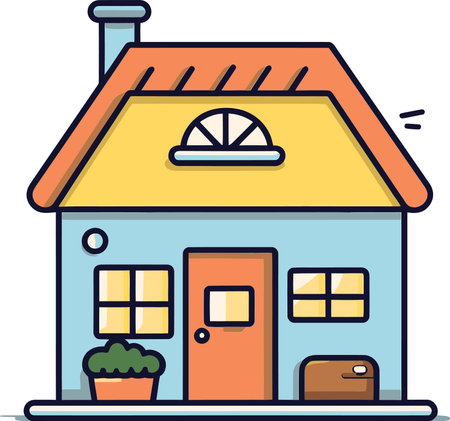1. Why Home Inspections Are Essential
Buying a home is one of the biggest financial decisions you’ll ever make. That’s why getting a professional home inspection before closing the deal is so important. A home inspection gives you a clear picture of the property’s condition and helps you avoid unexpected costs down the road.
What Is a Home Inspection?
A home inspection is a thorough examination of a house’s physical structure and systems. It’s typically performed by a licensed inspector who checks everything from the roof to the foundation. The goal is to identify any existing or potential problems that could cost you money after you move in.
How It Protects You
A professional home inspection can uncover hidden issues that aren’t obvious during a casual walkthrough. These might include things like faulty wiring, plumbing leaks, or structural damage. By knowing about these problems ahead of time, you can:
- Negotiate repairs or price reductions with the seller
- Plan for future maintenance costs
- Walk away from the deal if the issues are too serious
Common Issues Found During Inspections
| Area Inspected | Potential Problems |
|---|---|
| Roof | Missing shingles, leaks, poor drainage |
| Plumbing | Leaky pipes, outdated materials, water pressure issues |
| Electrical | Old wiring, overloaded circuits, safety hazards |
| Foundation | Cracks, uneven floors, moisture damage |
| HVAC Systems | Inefficient heating/cooling, worn-out components |
The Cost vs. Savings
The average home inspection in the U.S. costs between $300 and $500. While that may seem like an extra expense, it can save you thousands by revealing costly repairs before you commit to buying. Think of it as an investment in peace of mind.
Example Scenario:
If an inspection finds a major roof issue that would cost $10,000 to repair, you could ask the seller to fix it before closing or reduce the price accordingly. Without an inspection, youd be stuck paying for that yourself after moving in.
A Smart Step for Every Buyer
No matter if youre buying your first home or your fifth, getting a professional home inspection is always a smart move. It gives you confidence in your purchase and helps ensure your new home is safe and sound for years to come.
2. What Inspectors Look For
Before you commit to buying a home, it’s essential to understand what a certified home inspector will check during the inspection process. Their job is to evaluate the property’s overall condition and identify potential issues that could cost you money down the road. Here’s a breakdown of the key areas they typically examine:
Roofing
The roof protects your home from the elements, so inspectors pay close attention here. They’ll look for missing shingles, signs of water damage, sagging spots, and the overall age of the roof. They may also check gutters and flashing to ensure everything is properly sealed and draining.
Plumbing
Inspectors will test faucets, showers, and toilets to make sure water pressure is adequate and drains are functioning. They’ll check for leaks under sinks and around appliances. Older homes may have outdated or corroded pipes that could need replacement.
Electrical Systems
A safe electrical system is critical. The inspector will review the electrical panel for proper labeling and capacity. They’ll also test outlets and switches, verify GFCI protection in required areas like bathrooms and kitchens, and look for exposed wiring or outdated systems that may not meet current safety standards.
HVAC (Heating, Ventilation, and Air Conditioning)
The HVAC system affects comfort and energy efficiency. Inspectors will examine the furnace, air conditioner, ductwork, and thermostats. Theyll note whether the system appears well-maintained, how old it is, and whether its operating correctly at the time of inspection.
Common Areas Checked During a Home Inspection
| System | What Inspectors Look For |
|---|---|
| Roofing | Missing shingles, leaks, sagging areas, gutter condition |
| Plumbing | Water pressure, visible leaks, pipe materials, drainage issues |
| Electrical | Panel integrity, outlet testing, safety compliance (GFCI/AFCI) |
| HVAC | Age of system, visible maintenance needs, airflow consistency |
Why This Matters
Catching problems early can help you negotiate repairs or walk away from a bad deal. Knowing what inspectors focus on helps you better understand your future homes true condition—and protects your investment.

3. How to Choose a Qualified Home Inspector
Choosing the right home inspector is one of the most important steps in the home buying process. A qualified inspector can help you avoid expensive surprises by identifying issues before you close on a property. Here’s what to look for when selecting a professional you can trust.
Check for Proper Licensing and Certification
Not all states require home inspectors to be licensed, but in states where licensing is required, make sure your inspector is fully compliant with local laws. Even in states without licensing requirements, its best to choose someone who holds nationally recognized certifications.
Key Certifications and Associations
| Certification/Association | Description |
|---|---|
| ASHI (American Society of Home Inspectors) | One of the oldest and most respected organizations. Members must pass rigorous exams and follow strict standards. |
| InterNACHI (International Association of Certified Home Inspectors) | Offers comprehensive training and continuing education. Inspectors must adhere to a code of ethics and standards of practice. |
| State License | If your state requires it, ensure the inspector holds an active license in good standing. |
Look for Experience and Specialization
An experienced home inspector will likely have seen a wide variety of issues and know what to look for. Ask how long they’ve been inspecting homes and how many inspections they’ve performed. If youre buying an older home or one with unique features (like a historic property), consider an inspector with relevant experience.
Ask What’s Included in the Inspection Report
The inspection report should be detailed, clear, and include photos. Ask to see a sample report so you know what to expect. Some inspectors offer digital reports with summary sections that highlight major concerns—this can be very helpful when making decisions quickly.
Read Reviews and Ask for References
Online reviews can provide insight into other buyers’ experiences. Look up reviews on Google, Yelp, or Angie’s List. You can also ask the inspector for references from past clients.
Compare Costs—But Don’t Just Go With the Cheapest
Price shouldn’t be your only consideration. A lower cost may mean less thorough service or less experience. Expect to pay anywhere between $300 and $500 depending on your location and the size of the property.
Typical Home Inspection Cost Range by Region
| Region | Estimated Cost |
|---|---|
| Northeast | $400–$600 |
| Midwest | $300–$450 |
| South | $350–$500 |
| West Coast | $400–$600+ |
Make Sure They’re Fully Insured
A reputable home inspector should carry both general liability insurance and errors & omissions (E&O) insurance. This protects both you and them in case something is missed during the inspection.
4. Common Issues Found During Inspections
When youre buying a home, the inspection report can be eye-opening. Many homes, even newer ones, have problems that need attention. Some issues are minor and easy to fix, while others can be deal-breakers or great tools for negotiating a better price. Let’s go over the most common problems inspectors find and what they might mean for you as a buyer.
Structural Issues
One of the biggest red flags in any inspection is structural damage. This includes foundation cracks, sagging roofs, or uneven floors. These problems can be expensive to fix and may indicate long-term risks.
| Issue | What It Means | Potential Impact |
|---|---|---|
| Foundation Cracks | Could signal settling or poor construction | Might require costly repairs or engineering evaluation |
| Sagging Roof | Possible roof framing issues or water damage | May lead to full roof replacement |
| Bowed Walls | Usually caused by pressure from soil outside the house | Could indicate basement water issues or structural instability |
Electrical Problems
A home with outdated or faulty wiring can pose safety risks and may not meet current building codes. Inspectors often find:
- Exposed wires
- Overloaded circuits
- Lack of GFCI outlets in wet areas like kitchens and bathrooms
If these issues are found, an electrician will likely need to evaluate and possibly rewire parts of the house.
Plumbing Concerns
The plumbing system is another common trouble spot. Leaks under sinks, low water pressure, or old piping materials (like galvanized steel) may all show up in your report.
| Problem | Description | Your Next Step |
|---|---|---|
| Poor Water Pressure | Might be caused by corroded pipes or a failing water heater | Ask for repairs or price reduction to replace plumbing components |
| Sewer Line Issues | Trees roots or aging pipes can block the sewer line | A camera inspection may be recommended before purchase |
Roofing Defects
The roof protects everything below it, so it’s essential it’s in good condition. Common findings include:
- Missing shingles
- Poor flashing around chimneys or vents
- Moss growth indicating moisture retention
If the roof is near the end of its life, you’ll want to factor that into your budget—or use it as a negotiation point.
Mold and Moisture Problems
Mold isnt just gross—it can affect indoor air quality and cause health issues. Inspectors look for signs of moisture in basements, attics, and around windows.
- Damp insulation in attic spaces
- Mildew smells in basements or crawlspaces
- Bubbling paint on walls (often a sign of hidden moisture)
If mold is detected, a specialist should assess how serious it is before moving forward.
Pest Infestations
No one wants uninvited guests like termites, carpenter ants, or rodents. Pest damage can weaken wood structures and lead to costly repairs if not caught early.
| Pest Type | Telltale Sign | Recommended Action |
|---|---|---|
| Termites | Mud tubes on foundation walls or hollow-sounding wood beams | Pest control treatment and possible wood replacement needed |
| Mice/Rats | Droppings in attic/basement; chewed wires or insulation | Pest removal service plus sealing entry points around the home |
Aging HVAC Systems
The heating and cooling system affects comfort and utility costs. Older units may still work but could be inefficient or close to failure. Ask about:
- The age of the furnace and AC unit (10-15 years is typical lifespan)
- The last time they were serviced or cleaned
If replacement is needed soon, this might be a major cost you want to negotiate with the seller.
A good inspection helps you understand what youre really getting when you buy a home. While no property is perfect, knowing what issues exist puts you in a stronger position—whether its walking away from a money pit or negotiating a better deal on your dream home.
5. What Happens After the Inspection
Once the home inspection is complete, you’ll receive a detailed report outlining the condition of the property. This document can feel overwhelming at first, but don’t worry—we’ll break it down so you know what to do next.
Understanding the Inspection Report
The inspection report will typically include descriptions and photos of any issues found in the homes structure, systems, and components. It’s important to distinguish between minor maintenance items and major concerns that could affect your decision to buy.
Common Categories in an Inspection Report:
| Category | Description | Action Needed |
|---|---|---|
| Roofing | Leaks, damaged shingles, aging materials | May need repair or replacement |
| Plumbing | Leaks, low water pressure, outdated pipes | Assess for immediate fixes or upgrades |
| Electrical | Old wiring, unsafe panels, missing GFCIs | Could require professional correction |
| HVAC Systems | Inefficient operation, old equipment | Consider servicing or replacing units |
| Foundation/Structure | Cracks, uneven floors, moisture issues | Might need structural evaluation |
Negotiating Repairs or Price Adjustments
If significant issues are discovered, you have options. You can ask the seller to make repairs before closing, request a price reduction to cover the cost of repairs, or negotiate a credit at closing. Your real estate agent can help guide these negotiations.
Tips for Successful Negotiation:
- Prioritize critical repairs: Focus on safety issues or costly problems.
- Get estimates: Having contractor quotes adds weight to your negotiation.
- Be reasonable: Sellers may not agree to every request, especially if the market is competitive.
Deciding Whether to Move Forward
The inspection report gives you a clearer picture of the home’s true condition. Some buyers choose to walk away if there are too many red flags or expensive repairs. Others move forward with confidence after negotiating adjustments. Either way, this step ensures youre making an informed decision.
Your Next Steps:
- Review the inspection report carefully with your agent.
- Create a list of items that concern you most.
- Discuss negotiation strategies with your agent.
- If needed, consult professionals for further evaluations.
- Decide whether to proceed, renegotiate, or walk away.
A good home inspection empowers you with knowledge—so use it wisely as you move closer to owning your new home!


